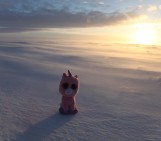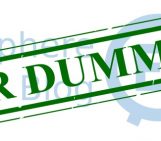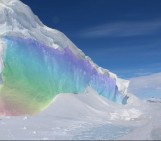
Fieldwork is essential to polar sciences, but who are the people that actually do the fieldwork these days? A great field team includes people spanning a diversity of scientific skills, but at the same time, a diversity of cultures, backgrounds, and identities also adds intrinsic value to team dynamics and the overall field work experience. As part of the International Thwaites Glacier Collaboration’s efforts to address the barriers to Antarctic fieldwork, their Inclusivity, Diversity, Equity, and Accessibility (IDEA) Council have spearheaded several initiatives towards building a positive and inclusive Antarctic work environment in the deep field (work away from field stations)– whether that be in a tent or on a research vessel. Below, we reflect on the path that we took, and share some lessons learned, towards creating an inclusive field work culture, summarising our upcoming publication in the Annals of Glaciology.
Who is a ‘typical’ geoscientist these days?
What comes to mind when you picture a (polar) geoscientist? Odds are, that your mind’s eye has envisioned this person to be someone who not only loves camping and the outdoors (and the cold!), but is also physically fit–how else would they be able to carry home all those rock samples, as well as their hammers and chisels? Jokes aside, while fieldwork is essential to polar sciences, the image that the general public ascribes to geosciences has created and perpetuated additional barriers to budding geoscientists.
Indeed, the geosciences represents one of the least diverse of all STEM (science, technology, engineering, mathematics) fields, and the polar sciences is likely even less diverse than the geosciences as a whole. Within scientific fields, diversity is lacking across race, ethnicity, gender identity, sexuality, socioeconomic status, language, and ability. On top of this, there are even more physical, cultural, logistical, and bureaucratic barriers that prevent researchers from engaging in lab, ship, or field work.
Polar science has also had its #metoo movement in response to a series of revealing and devastating reports and media, bringing to light various barriers towards achieving a diverse, welcoming, and equitable field environment. This includes published reports by the Australian Antarctic Division and the United States Antarctic Program that reveal a culture of enabling sexual assault and harassment. But, while these findings came as a shock to the general public, those involved in polar research, especially women, were not surprised, because the majority of national Antarctic programs have a culture that too often tolerated or ignored harassment. The outdated mould of how a geoscientist should look, act, or be (Nash et al. 2021) has hurt the more varied community that works in Antarctica.

The 2022-23 TIME (Thwaites Interdisciplinary Margin Evolution) field team, which includes both blog authors (TJ at the bottom left, Marianne at 3rd from right on top row). Which of these people look like a typical geoscientist to you? (hint: all of them!) Photo credit: Tara Sweeney (top right).
Resources for creating an inclusive field work environment
Because of the need to drastically improve efforts in inclusivity, diversity, equity, and accessibility (IDEA), the International Thwaites Glacier Collaboration (ITGC) IDEA Council has led a number of initiatives to encourage a positive and inclusive field work culture, such as creating open-access Community Norms and Values and Field and Ship Best Practices that all of its field teams commit to follow. In these reports, they also emphasise the importance of engaging in inclusive team discussions well before deployment. For example, ITGC facilitated these discussions through the expertise of our diversity consultant Leilani Henry and established:
- Key teamwork values that celebrate differences in identities, personalities, and ideologies within the field team;
- The importance of communication and setting ambitious, yet realistic expectations and roles for all participants;
- Systems to ensure that each and every team member feels valued within the team environment given their career stage, technical knowledge, and experience–this means that the most experienced team member will wash dishes like the rest of the team!
- Plans for a typical work day, including logistical check-ins as well as individual check-ins with each team member regarding their physical and mental well-being; and
- Explicit and diverse ways to seek help, both within and outside our field team using a variety of communication platforms.
The ITGC is not alone in attempting to shift the status quo in geoscientific field work culture. Numerous individuals and groups are also operating within the sphere of IDEA, with tangible and useful reports, guides, and opportunities:
- FieldSafe, a facilitated virtual workshop to mitigate environmental and inter-personal risks in remote field environments.
- A practical guide by Cooperdock et al. (2021) providing actions that leaders (e.g. teachers, lab technicians, field trip organisers) can take in the classroom, field, and lab.
- Lessons shared from ‘an experiment within an experiment’ as part of the Next-Generation Ecosystem Experiments–Arctic project (Iversen et al. 2020).
- Digital twinning in the marine and polar sciences, using virtual replication of real-world landforms and situations, as an alternative pathway to field work experiences.
- Accessible field trips, with preference given to those with disabilities, by the International Association for Geoscience Diversity.
- Workshops that engaged geoscience educators, industry professionals, and researchers collectively exploring the issues involved in making fieldwork accessible to learners.
- Cryocommunity’s shared resources for field work, including resources on safety and belonging, planning and leadership, gear, opportunities, and culture.
- The Polar Science Early Career Community Office (PSECCO)’s goals and activities to empower and elevate early career scientists in the Polar Sciences through building community, sharing resources, hosting skills trainings, and more.
- ADVANCEGeo’s multi-level approach to transform workplace climate, at the institutional level, through structural changes, and through individual education and empowerment.
- CIELO-G’s various opportunities for secondary school students and educators that engage them into the field geosciences.
- Polar Impact, the organisation representing minorities in the polar sciences, have various initiatives such as their Field Flags Project to showcase the diversity in fieldwork.
Importantly, what all of these activities have in common is a shared focus on how we as individuals can enact change in their spheres of influence. Bringing about institutional change is difficult, but incremental steps by members of our own institutions can pave the way for eventual shifts in our cultures towards positive inclusion, diversity, accessibility, and equality.

Word clouds describing perceptions of field team work culture from ITGC post-field season surveys reflecting the (a) 2019-20 and (b) 2021-22 field seasons, revealing both positive and negative responses. From Karplus, Young et al. (2023).
What have we learned from our own initiatives?
We’re not going to lie: creating and implementing our own initiatives has not always been smooth sailing, especially with Covid-19 wreaking havoc on Antarctic field work logistics over the past three years, with lasting effects over the rest of the decade. However, we’ve learned some important lessons through our own journey that we feel are important to highlight:
- Change comes from the synergy of top-down and bottom-up engagement. From the top down, those who are in senior or leadership positions have to be willing to listen, support, fund, and model the appropriate culture to encourage inclusivity. Simultaneously, from the bottom up, strong and supported ideas and initiatives from early career engagement can bring new perspectives and suggest actions that senior leadership may not have considered.
- Dedicating time to pre-field activities establishing field team dynamics and camp management can lead to a more inclusive field experience for all participants involved.
- Clear and transparent communication is paramount. Everyone should be engaged in establishing expectations and roles for the field season.
- Well-designed surveys are effective at capturing the human elements of the field experience. In ITGC, we were able to unearth both positive as well as negative elements of our own team’s work culture. Having concrete evidence such as these findings are crucial towards addressing and mitigating these negative or concerning elements of team work culture.
- Large research projects, such as the ITGC, should make the demographic information of its membership publicly available. A lack of demographic information in the geosciences, as well as polar sciences, has hindered our ability to monitor any progress in diversity and inclusivity. Even if our own data show that we are no more diverse than the field as a whole, we have to be honest with ourselves!
If you’re a team leader, we hope that this article has inspired you to think about how you’ll approach your next field season. If you’re a budding geoscientist, we hope that we have encouraged you to participate in field work–no matter what your personal, physical, or socioeconomic background. The average field geoscientist is not always a tough man, nor do they always come with a wealth of wilderness experience. All you need is an excitement about geoscience, and a willingness to learn!
Further reading
Bernard & Cooperdock (2018) No progress on diversity in 40 years. Nature Geoscience 11: 292–295.
Cooperdock et al. (2021) Counteracting Systemic Bias in the Lab, Field, and Classroom. AGU Advances 2(1): e2020AV000353.
Giles et al. (2020) Barriers to fieldwork in undergraduate geoscience degrees. Nature Reviews Earth & Environment 1: 77-78.
Iversen et al. (2020), Building a culture of safety and trust in team science. Eos 101.
Karplus, Young et al. (In Press) Strategies to build a positive and inclusive Antarctic field work environment. Annals of Glaciology.
Nash et al. (2021) “Antarctica just has this hero factor…”: Gendered barriers to Australian Antarctic research and remote fieldwork. PLoS One 14: e0209983.
Edited by Maria Scheel
 Tun Jan (TJ) Young and Marianne Karplus are (co-)PIs of Thwaites Interdisciplinary Margin Evolution (TIME), one of eight ITGC projects, and are the two field leads for TIME’s upcoming 2023-24 Antarctic season, which will feature a massive active seismics experiment across the Thwaites Glacier Eastern Shear Margin.
Tun Jan (TJ) Young and Marianne Karplus are (co-)PIs of Thwaites Interdisciplinary Margin Evolution (TIME), one of eight ITGC projects, and are the two field leads for TIME’s upcoming 2023-24 Antarctic season, which will feature a massive active seismics experiment across the Thwaites Glacier Eastern Shear Margin.
TJ is a Lecturer in Physical Geography at the University of St Andrews. He specialises in the application of innovative field-based geophysical techniques, such as radar, seismics, and drilling, to investigate the dynamics of glaciers and large ice sheets in response to past and present climate change. TJ was the Early Career Representative for the EGU Cryosphere Division from 2021 to 2023, and tweets as @tjy511.
 Marianne is an Associate Professor in Earth, Environmental, and Resource Sciences at The University of Texas at El Paso. She investigates the structure and dynamics of glaciers, mountains, earthquake-generating fault zones, and other earth environments using field-based geophysics, especially seismology and seismic imaging. Marianne also has a keen interest in scientific storytelling and poetry, and tweets as @TeamGeophysics.
Marianne is an Associate Professor in Earth, Environmental, and Resource Sciences at The University of Texas at El Paso. She investigates the structure and dynamics of glaciers, mountains, earthquake-generating fault zones, and other earth environments using field-based geophysics, especially seismology and seismic imaging. Marianne also has a keen interest in scientific storytelling and poetry, and tweets as @TeamGeophysics.




